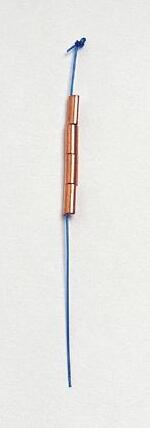| drug name | Copper IUD |
| classification | Long-acting reversible contraception (LARC) |
| pharmacokinetics | Copper IUDs work by releasing copper ions into the uterus. These ions create a hostile environment for sperm and prevent fertilization. There is no systemic absorption of copper, meaning it primarily affects the local uterine environment. The precise pharmacokinetic details are not typically described in the way a drug with systemic absorption would be. |
| suggested dosage | One-time insertion by a healthcare provider. Dosage is not applicable in the same way as a medication taken orally. The effectiveness doesn't change with weight or age. |
| indications | Primary use is for long-term birth control. Also, it may provide some protection against PID (Pelvic Inflammatory Disease). |
| safety in pregnancy | Contraindicated if pregnancy is suspected or confirmed. Removal is recommended if a pregnancy occurs. |
| safety in breastfeeding | Copper IUDs are generally considered safe to use while breastfeeding. Studies show no adverse effects on milk production or the health of the infant. |
| side effects | | 1 | Spotting or bleeding irregularities (especially in the first few months after insertion) | | 2 | Cramps | | 3 | Pelvic pain | | 4 | Infection (rare) | | 5 | Expulsion (rare) | | 6 | Anemia (rare, and usually related to heavy bleeding) |
|
| alternatives | |
| contraindications | | 1 | Known or suspected pregnancy | | 2 | Uterine abnormalities (e.g., severe fibroids, structural abnormalities, or previous uterine surgery) | | 3 | Pelvic inflammatory disease (PID) or active infection | | 4 | Allergy to copper | | 5 | History of ectopic pregnancy | | 6 | History of heavy bleeding disorders |
|
| interactions | No significant drug-drug interactions. However, some medical conditions may interact with the use of the IUD and should be discussed with the doctor. |
| warnings and precautions | | 1 | Insertion requires a trained healthcare professional. | | 2 | Follow-up appointments are crucial to monitor for any complications. | | 3 | Potential for pain during insertion and in the days following. | | 4 | The IUD does not protect against sexually transmitted infections (STIs). | | 5 | Prompt medical attention should be sought for any unusual or persistent symptoms following insertion. | | 6 | Proper use is crucial for its effectiveness and avoidance of issues like expulsion |
|
| additional information | Copper IUDs are highly effective for preventing pregnancy and generally considered a low-maintenance option for long-term birth control. It is important to discuss the potential benefits, risks, and alternatives with a healthcare provider before deciding to use it. |
| patient details | |
